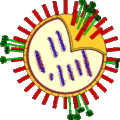
Finger length ratio is a reliable predictor of how a primate will behave socially, say scientists who have been running the tape-measure over groups of baboons and gibbons. Such ratios are governed by exposure in the womb to androgens like testosterone, which figure importantly in the development of masculine characteristics such as aggression and strength.
High levels of androgens, such as testosterone, increase the length of the fourth finger in comparison to the second finger. The scientists used finger ratios as an indicator of the levels of exposure to the hormone and compared this data with observed social behavior in primate groups.
The researchers, from the University of Liverpool, found that Old World monkeys, such as baboons and rhesus macaques, have a longer fourth finger in comparison to the second finger, which suggests that they have been exposed to high levels of prenatal androgens. These species tend to be highly competitive and promiscuous, which suggests that exposure to high levels of androgens before birth could be linked to these sorts of behaviors.
Other species, such as gibbons and many New World species, have finger ratios that suggest low levels of prenatal androgen exposure. These species were monogamous and less competitive than Old World monkeys. Great Apes, such as orangutans and chimpanzees, expressed a different finger ratio. This suggests that early androgen exposure is lower in this groups compared to Old World monkeys. Lower androgen levels could help explain why Great Apes show high levels of male cooperation and tolerance.
Related:
High testosterone drives risky investments
Testosterone Apocalypse!
Pointing The Finger At Aggressive Men


















Comments are closed.